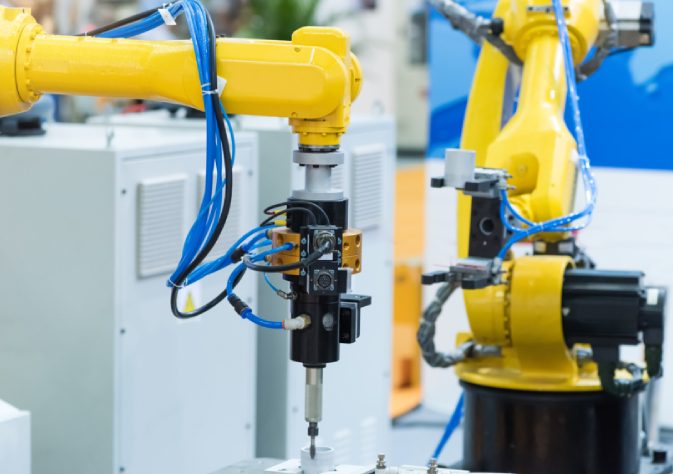Industries have plenty of challenging processes that pose a lot of risks for human. There are quite a lot of processes in the manufacturing industry that can be automated, so it can be more consistent and pose less risk. Robots are more versatile. They can be programmed to follow certain rules and functions. This can be changed based on the need of the manufacturing process. Grinding materials or blocks is one such activity where using robots has been more effective. Removing materials from the assembly lines is another process that has been handled by robots.
Robotic grinding and robotic material removal are more streamlined and improves productivity. Operations like grinding iron castings to removing diesel blocks are now being done by robots. To gain higher level of productivity and quality, manufacturers these days are switching to robotic grinding. The robots are not just designed for grinding it can also do the finishing neatly. This enables manufacturers to increase production with less cost and high quality.
Challenges in Manual Operation
Manual operations are always subject to human error. And, to err is human. So, the quality of the product is at high risk. Humans may function like robots and may end up producing good quality products but there is always room for human error. This, when it occur will cost the manufacturer heavily. Time is precious as well as cost.
Another issue with manual operation is the consistency in terms of speed of operation. Human workers can slow down and this affects the throughput. It becomes unpredictable to give an exact number of throughputs that can be produced in a day. This will affect the productivity and if consistency is not followed quality cannot be achieved.
Benefits of Robotic Operation
As mentioned before robots are more versatile. It can be programmed to take up any amount of work in a given time. Manufacturers can easily address inconsistencies and quality of the part produced. They can easily be used to produce higher throughput resulting in higher production level. Like humans, robots do not get tired. The can be used to do a task repeatedly and for longer duration without any break. Robotic grinding and finishing is more beneficial for the manufacturer. It reduces time, saves cost, increases productivity and reduces risks of human life. More than the return on investment what is more attractive is the reduction of operating cost in the long run.

